Urban heat islands are why it can feel 20 degrees hotter in different parts of the same city
Does it feel sweltering in your neighborhood, yet pleasant at the park a few blocks away? You might be living on an urban heat island.
The effect happens when neighborhoods in highly developed cities like New York and New Orleans become 15 to 20 degrees hotter by midafternoon than surrounding areas with fewer buildings and more vegetation, according to the National Integrated Heat Health Information System.
“If you walk into Central Park, it's going to feel cooler most likely in the summer than standing on the black pavement just outside the park's boundaries," said Joan Casey, an assistant professor of environmental health sciences at Columbia University’s Mailman School of Public Health.
Extreme heat remains the most deadly weather event, according to the National Oceanic and Atmospheric Administration, and research suggests high temperatures affect lower-income communities the most.
Here’s what to know about the impact of urban heat islands:
Lower-income communities hit hardest
The median energy burden – the percentage of income spent on home energy costs – for low-income families is 8.1%, while the national median is 3.1%, according to the American Council for an Energy-Efficient Economy.
"The result of sustained and intense climate change-driven heat waves puts even greater stress on families trying to make ends meet,” said Rebecca Foster, CEO of the Vermont Energy Investment Corp..
Using air conditioning could mean a choice of keeping cool or putting food on the table for impoverished families, said Katherine Catalano, the American Public Health Association’s deputy director for climate, health and equity.
HEAT INDEX, HEAT DOMES AND MORE: Everything you need to know about heat
WHAT ARE CLOUDS MADE OF?:How do clouds form? The 10 major types explained.
Chidinma Nwakanma, an assistant professor of clinical emergency medicine at the University of Pennsylvania, said she’s frequently seen heat exhaustion patients at Penn Medicine amid heat waves, particularly from lower-income communities lacking access to resources.
“You might not realize you're overheating until you start having symptoms,” said Nwakanma, who works in Philadelphia. The urban heat island's poverty rate is 19.4% – nearly twice the national rate of 10.9%, U.S. census data shows.
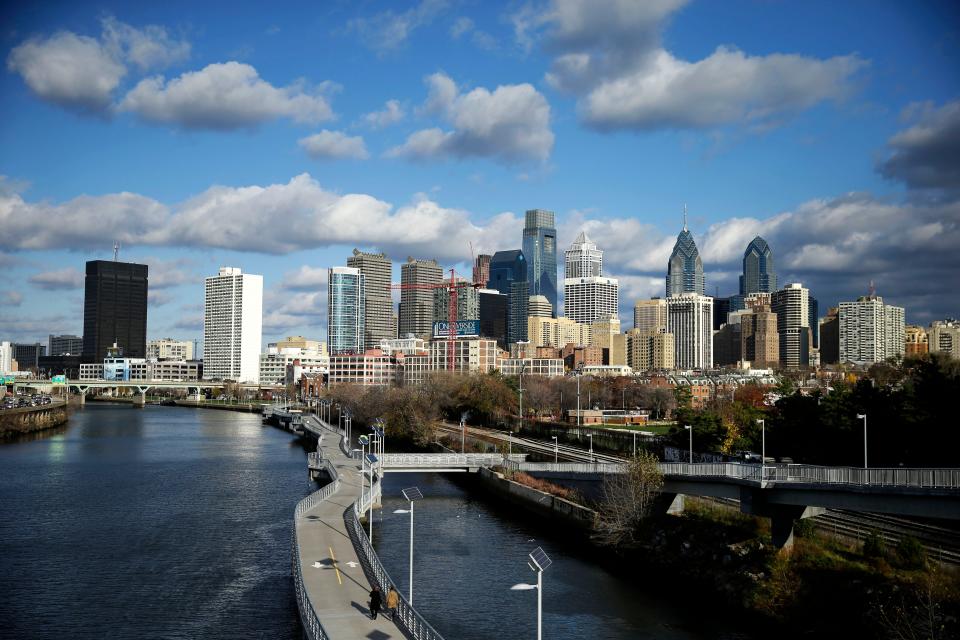
Between 2010 and 2018, New York City reported an average of 350 "heat-exacerbated deaths" each season between May and September, with low-income and communities of color hit hardest, according to the city’s Office of Climate and Environmental Justice.
Black New Yorkers experience higher poverty rates and die of heat-related illnesses at a disproportionately high rate, according to the city’s 2022 Heat-Related Mortality Report.
Decades of exclusion from private investment and public infrastructure improvements have left Black and Brown communities significantly hotter, with fewer trees and parks, Catalano said.

These impacts date back to the 1930s when the federal government’s neighborhood redlining singled out predominantly Black-populated communities on maps as risky investments, she added.
HURRICANE SEASON READINESS:Stay prepared for the next hurricane or storm headed your way.
SUMMER OF SHARKS:Has there been an uptick in attacks? Here's what we know
A 2020 Science Museum of Virginia-led study used an interactive dashboard to show how 108 formerly redlined communities are warmer than neighboring non-redlined areas in 94% of the cities studied.
A recent Climate Ready Boston analysis found redlined areas were 7.5 degrees hotter in the daytime, 3.6 degrees hotter after sunset, and have 20% fewer parks and 40% less tree canopy than other communities, according to the City of Boston.
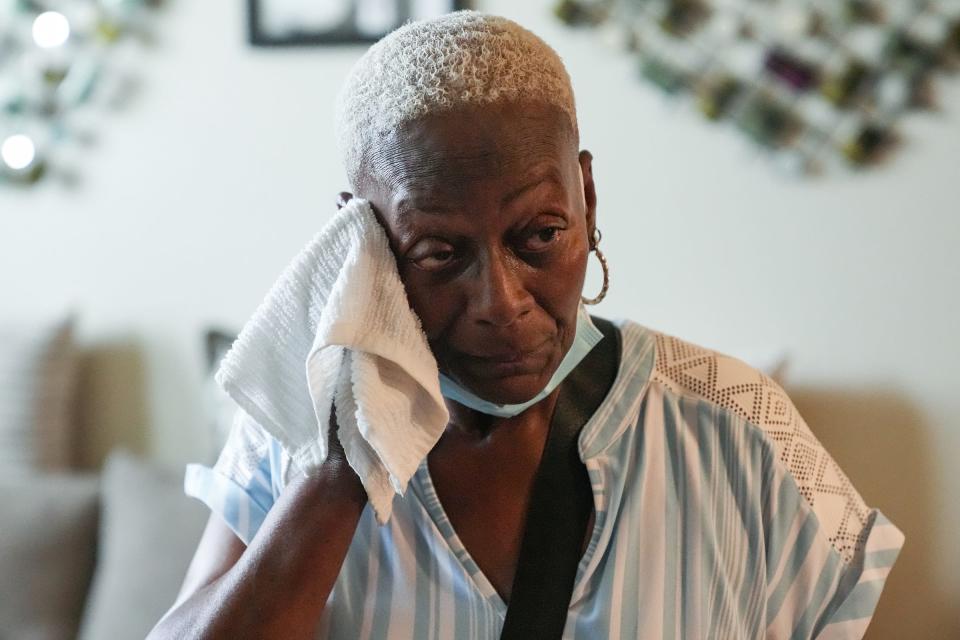
Mapping urban heat islands
Through September, NOAA and the National Integrated Heat Health Information System will collect key data from 15 U.S. cities, including Jacksonville, Florida; Milwaukee and Boulder, Colorado. The Urban Heat Island Mapping campaign's scientists want to educate the public on extreme heat and urban heat-related equity issues.
Local volunteers with heat sensors drive or bike through neighborhoods on some of the year’s hottest days collecting temperature, humidity and other data that helps experts examine heat impacts in different parts of certain communities, according to NOAA.
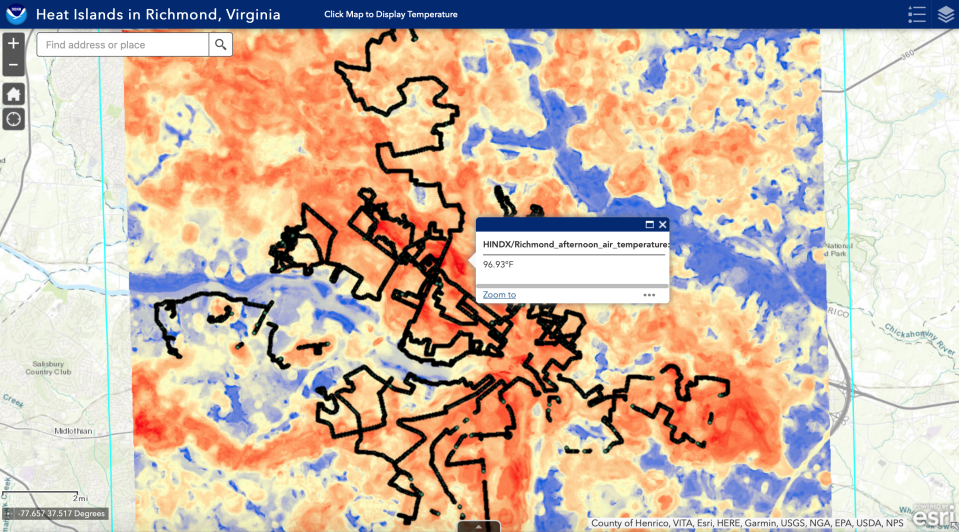
"Knowing where temperature differences are strongest can be a really good indication of where measures can be taken to reduce those temperatures," said Hunter Jones, climate and health project manager of the NOAA Climate Program Office and National Integrated Heat Health Information System.
NO HEAT RELIEF:Without air conditioning in many homes, residents in these cities swelter
'NET ZERO'? 'CARBON NEUTRAL'?:Climate change jargon got you confused? Let us explain
The data helps create maps city officials and community groups can use to develop extreme-heat community protection plans, according to NOAA. Cities have used it to teach residents and policymakers about heat's local impact and to make citywide upgrades like cooling station-fitted bus shelters.
"In Honolulu, (the data) was used for social vulnerability analysis and to consider where they might want to add more trees to provide cooling," Jones said.
Combating the urban heat island effect
Opting for reflective or permeable cooler pavements, planting more trees and installing vegetation-covered green roofs are some ways communities are fighting the heat, the Environmental Protection Agency’s Heat Island Community Actions Database suggests. It tracks city and state extreme-heat mitigation measures.
Philadelphia set an urban heat island mitigation goal of increasing its tree canopy by 30% by 2025, according to the U.S. Department of Agriculture.

Since 2010, the city has required new construction, with the exception of vegetative roofs and ones with solar equipment, to use white or highly reflective roofs, according to the EPA.
In Washington, D.C., where Catalano is based, officials send out extreme heat alerts and phone numbers to access nearby cooling centers. It benefits the homeless population and those with insecure energy access, she said.
VEIC, Vermont Energy Investment Corp., a 35-year-old nonprofit organization, provides tools to boost communities' resilience against the effects of climate change, including extreme heat.
Washington, D.C.'s goal of utilizing VEIC's solar program is to offer solar access to 100,000 of its income-qualified residents by 2032. Since 2019, the VEIC-implemented D.C. Sustainable Energy Utility has worked with solar developers and installers to provide enough solar to cut 6,000 income-qualified families electric bills by 50% for the next 15 years.
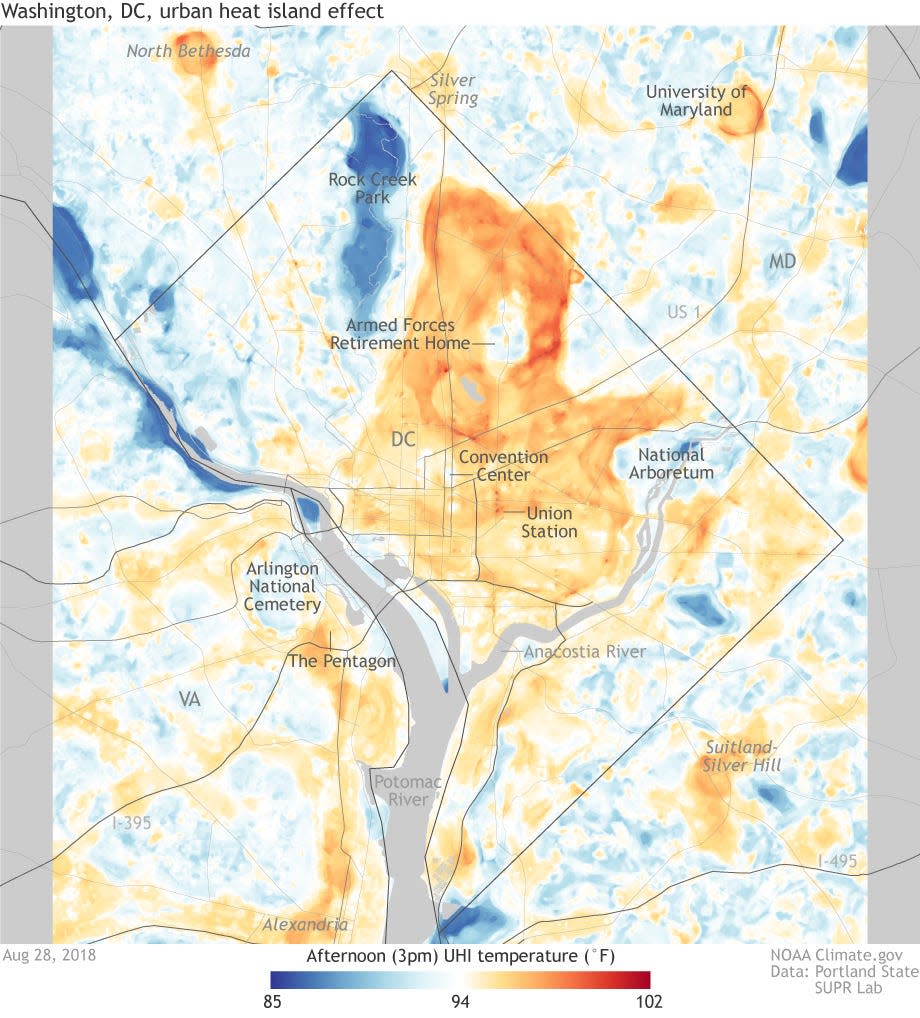
Boston announced in April plans to launch an Extreme Temperatures Task Force as part of a three-phase plan to address extreme heat and prepare the city for rising temperatures ahead of time. In 2015, New York City leaders met the goal of planting one million trees two years ahead of schedule through its Cool Neighborhoods NYC initiative.
Some legislators have proposed bills to combat extreme heat impacts, like the Preventing Health Emergencies And Temperature-related (HEAT) Illness and Deaths Act, which was reintroduced in 2021 after its initial proposal in 2020.
Senators Edward J. Markey of Massachusetts and Alex Padilla of California said the act would strengthen and expand interagency efforts to address high temperatures, provide $100 million in financial aid for community projects to reduce extreme heat exposure and issue recommendations for federal action on heat-health issues.
This article originally appeared on USA TODAY: Is your city considered an urban heat island? Here's what to know

